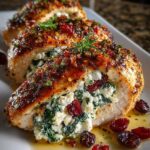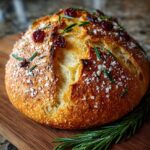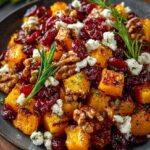The Comprehensive Guide to Cinnamon Sticks: From Origins to Culinary Uses and Beyond
Cinnamon sticks are among the most versatile and widely used spices in the world. These fragrant sticks come from the inner bark of trees belonging to the genus Cinnamomum. People value them for their warm, sweet, and spicy flavor. However, cinnamon sticks are much more than just a flavorful ingredient; they also hold cultural, historical, and medicinal significance. In this comprehensive guide, we will explore everything you need to know about cinnamon sticks, including their types, uses, nutritional benefits, and how to choose and store them properly.
For those who enjoy experimenting with spices, you might also find our Crispy Chicken Fritta Guide helpful for adding a twist to your savory dishes.
Part 1: Introduction to Cinnamon Sticks
1.1 What Are Cinnamon Sticks?
Cinnamon sticks, also known as quills, are the dried inner bark of Cinnamomum trees. People use these fragrant sticks in various culinary applications, from spicing up savory dishes to adding warmth to sweet treats. Their history dates back thousands of years when people valued them more than gold and traded them extensively across the globe. Harvesters peel the bark from the tree, allowing it to curl into rolls as it dries. They then cut these rolls into the familiar sticks that we find in stores.
Cinnamon’s appeal extends beyond its flavor. It has a long history of use in traditional medicine, religious rituals, and even as a natural preservative. The Egyptians used cinnamon in the embalming process, and it was highly prized in ancient Rome, where it was burned at funerals to mask the scent of the deceased.
1.2 The History and Origin of Cinnamon
Cinnamon is native to Sri Lanka, historically known as Ceylon, where it was first discovered and cultivated. It became a prized commodity during the spice trade, with European explorers seeking new trade routes to Asia to obtain this precious spice. Cinnamon’s influence spread to the Middle East and later to Europe, where it became a symbol of wealth and luxury.
In ancient times, cinnamon was so highly valued that it was considered a gift fit for monarchs and deities. The spice trade was a driving force behind many of the great explorations of the world, with merchants and explorers risking their lives to bring back this precious commodity. Over time, the use of cinnamon spread across the globe, and today it is a common ingredient in many cuisines, from the sweet pastries of Europe to the rich curries of India.
Cinnamon’s significance in history is evident in its role in religious and spiritual practices. The Bible mentions cinnamon as part of the holy anointing oil used in sacred rituals. Ancient Chinese medicine also utilized cinnamon, believing in its warming properties that could drive out cold and improve circulation.
Part 2: Types of Cinnamon Sticks
2.1 Ceylon Cinnamon
Ceylon cinnamon, often referred to as “true cinnamon,” is known for its delicate, slightly sweet flavor. It is considered the finest quality cinnamon and is preferred in many European and Latin American cuisines. Ceylon cinnamon sticks are lighter in color and have a soft texture, making them easy to grind.
Ceylon cinnamon is not only prized for its flavor but also for its health benefits. It contains lower levels of coumarin, a naturally occurring compound that can be harmful in large quantities. This makes Ceylon cinnamon a safer choice for regular consumption, particularly for those who use cinnamon as a health supplement.
Ceylon cinnamon’s unique flavor profile makes it ideal for use in desserts, such as cinnamon rolls, apple pies, and custards. It also pairs well with fruits like apples, pears, and peaches, enhancing their natural sweetness without overpowering them.
2.2 Cassia Cinnamon
Cassia cinnamon is the most commonly available type of cinnamon, especially in the United States. It has a stronger, spicier flavor compared to Ceylon cinnamon. Cassia sticks are darker and thicker, often requiring more effort to grind. Within the Cassia variety, there are several subtypes, including Saigon, Chinese, and Indonesian cinnamon, each with its unique flavor profile.
Cassia cinnamon is often used in savory dishes, where its bold flavor can stand up to strong ingredients like garlic, ginger, and chili. It’s a common ingredient in spice blends like Chinese five-spice powder and garam masala. In the U.S., Cassia is often the cinnamon of choice for baking, particularly in recipes that require a robust cinnamon flavor, such as cinnamon buns and spice cakes.
However, it’s important to note that Cassia cinnamon contains higher levels of coumarin than Ceylon cinnamon. While small amounts of coumarin are generally safe, consuming large quantities over time can pose health risks, particularly for individuals with liver conditions. For this reason, it’s advisable to use Cassia cinnamon in moderation.
2.3 Other Varieties
While Ceylon and Cassia are the most well-known, there are other varieties of cinnamon, such as Korintje and Vietnamese cinnamon. These varieties are less common but are prized for their distinct flavors, which range from sweet to pungent.
- Korintje Cinnamon: Often used in commercial baked goods, Korintje cinnamon has a mild flavor and is a popular choice for mass-produced cinnamon products.
- Vietnamese Cinnamon: Known for its intense, spicy flavor, Vietnamese cinnamon (also known as Saigon cinnamon) is a favorite among cinnamon enthusiasts. It has a higher oil content, which gives it a more potent aroma and flavor.
These varieties offer a range of options for those who want to experiment with different cinnamon flavors in their cooking. Whether you’re looking for a mild, sweet cinnamon to complement your desserts or a bold, spicy cinnamon to add depth to your savory dishes, there’s a variety to suit every palate.
Part 3: How to Use Cinnamon Sticks
3.1 Culinary Uses
Cinnamon sticks are incredibly versatile in the kitchen. They can be used whole to infuse liquids, such as in mulled wine or chai tea, or they can be ground into powder for baking. Cinnamon is a key ingredient in many global cuisines, from Moroccan tagines to Mexican mole.
One of the simplest ways to use cinnamon sticks is to add them to your morning coffee or tea. Simply place a stick in your cup and let it steep along with your tea bag or coffee grounds. The result is a warm, spicy drink that’s perfect for starting your day.
Cinnamon sticks can also be used in savory dishes. In Indian cooking, for example, cinnamon sticks are often added to rice pilafs, curries, and stews to infuse the dish with a subtle warmth and complexity. In Mexican cuisine, cinnamon is a key ingredient in mole sauce, where it balances the heat of chili peppers and the richness of chocolate.
3.2 Non-Culinary Uses
Beyond the kitchen, cinnamon sticks have numerous non-culinary uses. They are popular in potpourri, adding a warm, spicy aroma to the home. People also use cinnamon sticks in crafting, often featuring them in holiday decorations. Additionally, traditional medicine has utilized cinnamon for its medicinal properties, such as aiding digestion and reducing inflammation.
Cinnamon sticks can be used to create a natural air freshener by simmering them in a pot of water with other aromatic ingredients like cloves, orange peels, and vanilla. The resulting scent will fill your home with a warm, inviting fragrance that’s perfect for the fall and winter months.
Cinnamon is also believed to have insect-repellent properties. Placing cinnamon sticks in your pantry or kitchen cabinets may help deter pests like ants and moths. Additionally, cinnamon’s antimicrobial properties make it a popular ingredient in natural cleaning products.
3.3 Grinding and Storing Cinnamon Sticks
Grinding your own cinnamon sticks ensures the freshest and most potent flavor. To grind cinnamon sticks, you can use a spice grinder or a mortar and pestle. Proper storage is crucial to maintaining the quality of your cinnamon sticks. Store them in an airtight container in a cool, dark place, where they can last up to a year.
When grinding cinnamon sticks, it’s important to note that the texture of the powder may be slightly coarser than store-bought cinnamon. This is because commercial cinnamon powders are often finely milled to achieve a uniform texture. However, the flavor of freshly ground cinnamon is far superior to pre-ground varieties, making it worth the extra effort.
To extend the shelf life of your cinnamon sticks, you can also store them in the freezer. Place the sticks in an airtight container or a vacuum-sealed bag and store them in the freezer for up to two years. When you’re ready to use them, simply let them thaw at room temperature before grinding or using them whole.
Part 4: Nutritional Benefits and Health Considerations
4.1 Nutritional Profile
Cinnamon is rich in antioxidants, including polyphenols, which help protect the body from oxidative stress. It also contains anti-inflammatory properties, making it beneficial for reducing inflammation in the body. A small amount of cinnamon added to your daily diet can contribute to overall health.
In addition to its antioxidant properties, cinnamon is also a good source of manganese, fiber, calcium, and iron. These nutrients play a vital role in maintaining healthy bones, supporting digestion, and regulating blood sugar levels.
Cinnamon has been studied for its potential benefits in managing conditions like diabetes, heart disease, and neurodegenerative disorders. While more research is needed to fully understand the extent of these benefits, incorporating cinnamon into a balanced diet can be a simple way to support overall health.
4.2 Potential Health Risks
While cinnamon offers many health benefits, it’s important to consume it in moderation. Cassia cinnamon contains higher levels of coumarin, a compound that can be harmful in large quantities. Consuming large amounts of cassia cinnamon regularly may lead to liver damage or other health issues. Therefore, it’s advisable to choose Ceylon cinnamon for regular use.
Coumarin, which is present in higher concentrations in Cassia cinnamon, has been linked to liver toxicity when consumed in large amounts. The European Food Safety Authority (EFSA) recommends limiting the intake of coumarin to 0.1 mg per kilogram of body weight per day. For most people, this means that consuming moderate amounts of cinnamon in food is safe, but taking large doses of cinnamon supplements could be harmful.
4.3 Medicinal Uses
For centuries, traditional medicine has utilized cinnamon. It helps control blood sugar levels, making it beneficial for individuals with diabetes. People also use cinnamon as a natural remedy for colds, flu, and digestive issues.
Practitioners of traditional Chinese medicine use cinnamon to warm the body and improve circulation. They often include it in herbal remedies for cold and flu symptoms, as well as digestive disorders. In Ayurvedic medicine, practitioners believe cinnamon balances the body’s energies and use it to treat conditions like arthritis, menstrual cramps, and respiratory ailments.
Cinnamon’s antimicrobial properties have also been studied for their potential to fight infections and reduce the growth of harmful bacteria and fungi. Some research suggests that cinnamon oil may be effective in treating skin infections, dental issues, and even certain types of cancer.
Part 5: Identifying Quality Cinnamon Sticks
5.1 Visual and Sensory Indicators
High-quality cinnamon sticks should be firm and tightly rolled, with a smooth surface. The aroma should be strong and sweet, indicative of fresh cinnamon. When purchasing cinnamon, look for sticks that are evenly colored and free from cracks or breaks.
One way to distinguish between Ceylon and Cassia cinnamon is by examining the shape of the sticks. Ceylon cinnamon sticks are thin and have a single, tight curl, while Cassia sticks are thicker and have a double curl or a hollow center. The color of the sticks can also be an indicator of quality; Ceylon cinnamon is typically lighter in color, while Cassia is darker and more reddish-brown.
The aroma of cinnamon is another key indicator of quality. Fresh cinnamon should have a sweet, warm, and slightly spicy scent. If the aroma is weak or musty, the cinnamon may be old or of low quality.
5.2 Certification and Sourcing
To ensure you’re getting the best cinnamon, consider buying certified organic or fair-trade cinnamon. These certifications ensure that the cinnamon has been produced without harmful chemicals and that the farmers are paid fairly for their labor.
When sourcing cinnamon, it’s important to be aware of potential adulteration. Some suppliers may mix lower-quality cinnamon with higher-quality varieties or add fillers to increase the weight of the product. Buying from reputable sources and looking for certifications like USDA Organic or Fair Trade can help ensure that you’re getting pure, high-quality cinnamon.
In addition to certifications, consider the country of origin when purchasing cinnamon. Ceylon cinnamon is primarily grown in Sri Lanka, while Cassia cinnamon is grown in China, Indonesia, and Vietnam. Knowing the source of your cinnamon can help you make informed decisions about the flavor and quality of the product.
Part 6: Frequently Asked Questions (FAQs) About Cinnamon Sticks
6.1 Are All Cinnamon Sticks the Same?
No, there are different types of cinnamon sticks, including Ceylon and Cassia, each with unique flavors and characteristics. While they can be used interchangeably in some recipes, the choice of cinnamon can significantly impact the flavor and health benefits of the dish.
6.2 How Can You Identify True Cinnamon?
True cinnamon, or Ceylon cinnamon, is lighter in color and has a sweeter, more delicate flavor compared to Cassia cinnamon, which is darker and spicier. True cinnamon sticks are also thinner and more fragile, making them easier to break or grind.
6.3 Is It Safe to Chew on Cinnamon Sticks?
While it’s not harmful, chewing on dry cinnamon sticks can be tough on the teeth. It’s better to use cinnamon sticks for infusing flavors in liquids or as a garnish. If you do choose to chew on a cinnamon stick, be sure to do so carefully to avoid damaging your teeth.
6.4 How Should Cinnamon Sticks Be Stored?
Store cinnamon sticks in an airtight container in a cool, dark place to maintain their freshness and potency. Proper storage can extend the shelf life of cinnamon sticks, allowing you to enjoy their flavor and aroma for months to come.
Conclusion: Embracing Cinnamon Sticks in Your Culinary Adventures
7.1 Final Thoughts on Cinnamon Sticks
Cinnamon sticks are an essential ingredient in any kitchen. Their versatility in both sweet and savory dishes, along with their numerous health benefits, make them a valuable addition to your spice rack. Whether you’re using them in a warm apple cider or a savory curry, cinnamon sticks are sure to enhance the flavor and aroma of your dishes.
In addition to their culinary uses, cinnamon sticks offer a range of non-culinary benefits, from their use in traditional medicine to their role as a natural air freshener. Their rich history and cultural significance only add to their appeal, making them a spice worth exploring in greater depth.
7.2 Encouragement to Experiment
Don’t be afraid to experiment with cinnamon sticks in your cooking. Try adding them to unexpected dishes, like stews or marinades, to discover new and exciting flavors. With so many varieties and uses, the possibilities are endless. Whether you’re a seasoned chef or a home cook looking to expand your spice collection, you can explore a world of flavor with cinnamon sticks.
By incorporating cinnamon sticks into your culinary repertoire, you can elevate everyday dishes and create memorable meals that are rich in flavor and tradition. So go ahead, experiment with this ancient spice, and discover the many ways it can enhance your cooking and your health.
I’m Billy, a classically trained culinary school graduate from The Culinary Institute of America with over 12 years in the restaurant industry and over 19 years of cooking experience.








3 thoughts on “Cinnamon Sticks: The Guide to Types, Uses, and Health Benefits”
Touche. Outstanding arguments. Keep up the great work.
Nice post. I learn something totally new and challenging on blogs I stumbleupon on a daily basis.It will always be useful to read through content from other authors and use a little something from other websites.
I’m not that much of a internet reader to be honest but your blogs really nice, keep it up! I’ll go ahead and bookmark your site to come back down the road. Many thanks